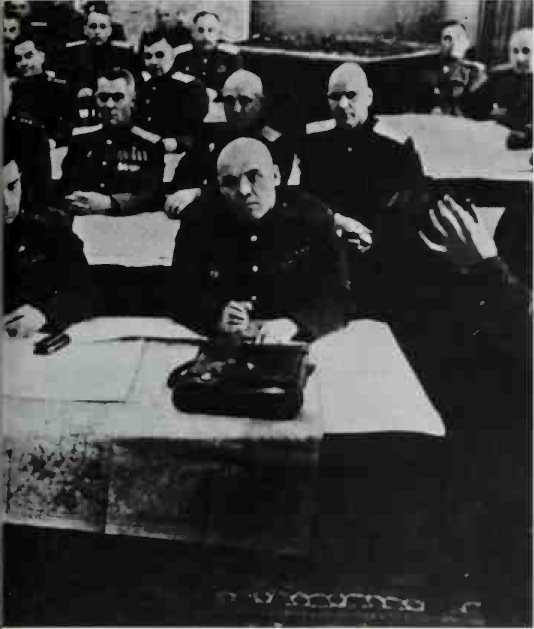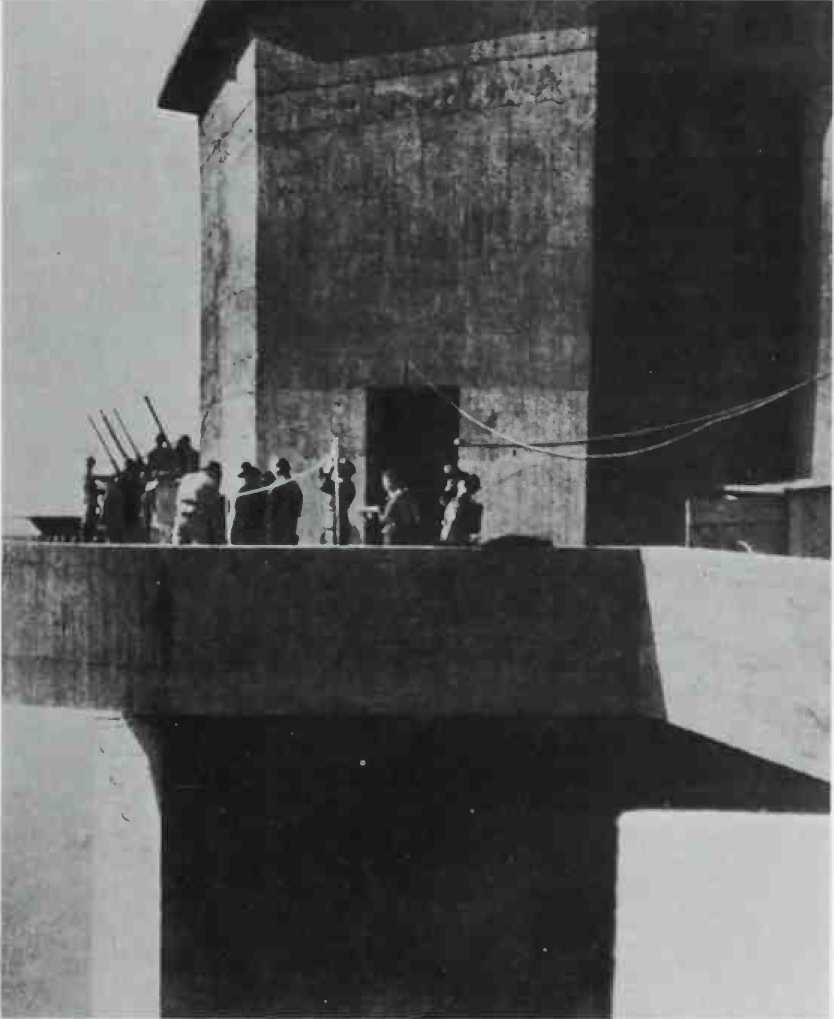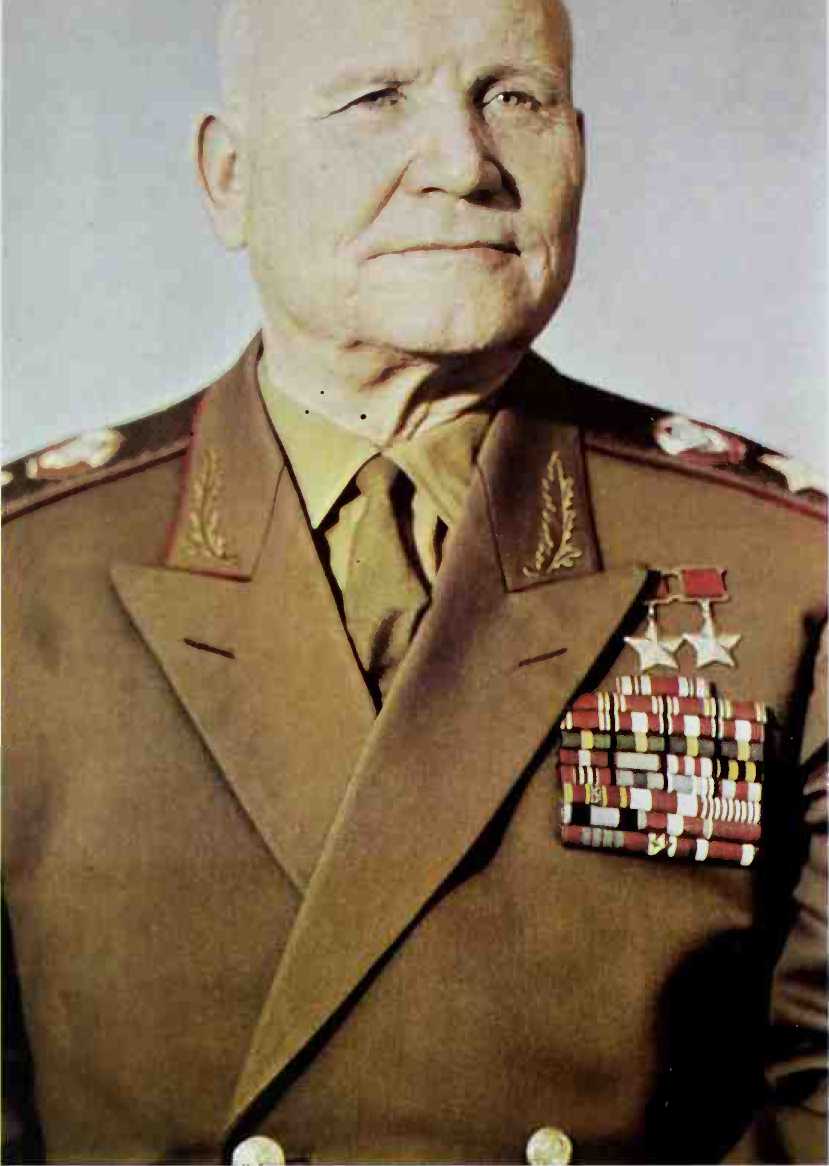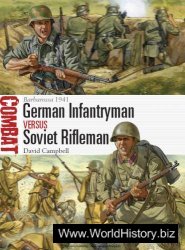Hitler refused to abandon the city and insisted on taking personal charge of its defence. He had a little more than 90,000 men at his disposal, including the youths and 50-year-old men of the Volkssturm, as well as the remainder of LVI Panzer Corps. But in spite of this he did not regard

The battle as lost. Whilst he galvanised the resistance, Field-Marshal Keitel and Colonel-General Jodi, who had both left Berlin on his instructions, would mount the counter-attacks which would complete the enemy’s defeat. The 11th Army (General F. Steiner) would emerge from the Oranienburg-Eberswalde front and crush Zhukov, against the north front of the capital whilst Konev, on the south front, would meet the same fate from General W. Wenck and his 12th Army. Meanwhile, the Brandenburg Gauleiter, Joseph Goebbels, launched into inflammatory speeches and bloodthirsty orders:
"Your Gauleiter is with you,” he shouted through the microphone, "he swears that he will of course remain in your midst with his colleagues. His wife and children are also here. He who once conquered this city with 200 men will henceforth organise the defence of the capital by all possible means.” And these were the means: "Any man found not doing his duty,” he decreed, "will be hanged on a lamp post after a summary judgement. Moreover, placards will be attached to the corpses stating: T have been hanged here because I am too cowardly to defend the capital of the Reich’-T have been hanged because I did not believe in the Fiihrer’-T am a deserter and for this reason I shall not see this turning-point of destiny’.” etc.
The 11th Army’s counter-attack never materialised, mainly because of the offensive launched on April 20 against the 3rd Panzerarmee by Rokossovsky across the lower Oder. Elsewhere, as Zhukov spread out towards the west, Steiner was compelled to thin out his forces even more, some of which were entirely worn out and the rest badly undertrained. Finally on April 26, the troops of the 2nd Belorussian Front, after making a breach below Schwedt, moved towards Prenzlau. Hein-rici withdrew two or three divisions from the 11th Army to stop them. As he was unable to have him shot for insubordination, Keitel could only relieve him of his command. In the present position, he would have found no one to pronounce a death sentence and have it carried out.
Meanwhile, Hitler had addressed the following order of the day to the 12th Army on April 23: "Soldiers of the Wenck Army! An immensely important order requires you to withdraw from the combat zone against our enemies in the
V A concrete Flak tower, part of Berlin’s defences. While the major threat came from the Red land forces massing to the east, the Western Allies’ air forces were still very much a factor to be reckoned with.


A Marshal of the Soviet Union I. S. Konev, commander of the 1st Ukrainian Front fighting its way westwards south of Berlin.
A > > German troops try to rescue as much as they can from a burning S. S. vehicle outside the Anhalter Station in Berlin.
A > Part of the final exodus from the doomed capital.
> Berliners flee their homes muffled and goggled against the dust and smoke of the last battle.
West and march East. Your mission is simple. Berlin must remain German. You must at all costs reach your planned objectives, for other operations are also in hand, designed to deal a decisive blow against the Bolsheviks in the struggle for the capital of the Reich and so to reverse the position in Germany. Berlin will never capitulate to Bolshevism. The defenders of the Reich’s capital have regained their courage on hearing of your rapid approach; they are fighting bravely and stubbornly, and are firmly convinced that they will soon hear your
Guns roaring. The Fiihrer calls you! You are getting ready for the attack as before in the time of your victories. Berlin is waiting for you!”
The German 12th Army gave way to the Western Allies on the Elbe between Wittenberge and Wittenberg and carried out the regrouping and change of front prescribed. With a strength of two Panzer corps and a handful of incomplete and hastily trained divisions it moved on Berlin. During this forward movement, which brought it to Belzig, 30 miles from the bunker where Hitler was raging and fuming, it picked up the Potsdam garrison and the remnants of the 9th Army (estimated at 40,000 men), who had with great difficulty made their way from Liibben to Zossen, leaving more than
200,000 dead, wounded, and prisoners and almost all its materiel behind it. On April 29, however, Wenck was compelled to note that this last sudden effort had finished the 12th Army, and that it could no longer hold its positions.
In Berlin, the armies of the 1st Belorussian Front started to round on the last centres of resistance on the same day. A tremendous artillery force, under Marshal Voronov, supported the infantry’s attacks. It had 25,000 guns and delivered, according to some reports, 25,600 tons of shells against the besieged city, that is, in less than a week, more than half the 45,517 tons of bombs which British and American planes had dropped on the German capital since August 25, 1940.




 World History
World History









